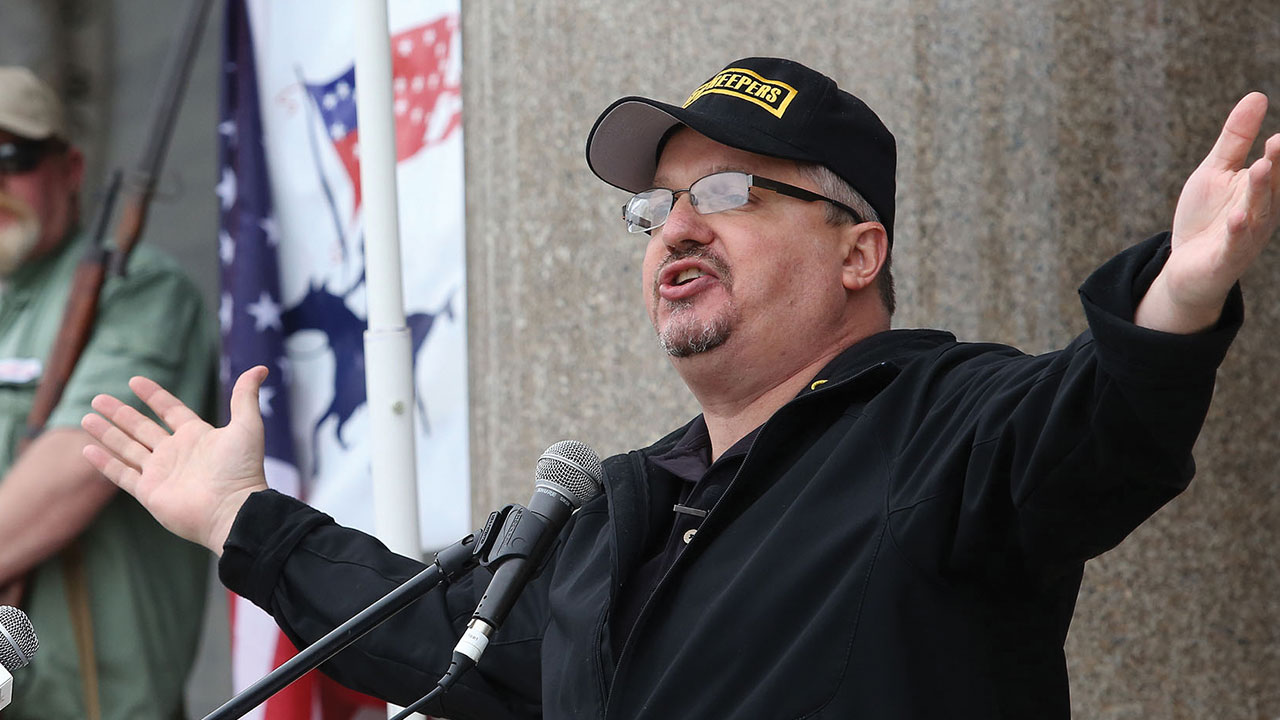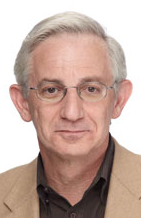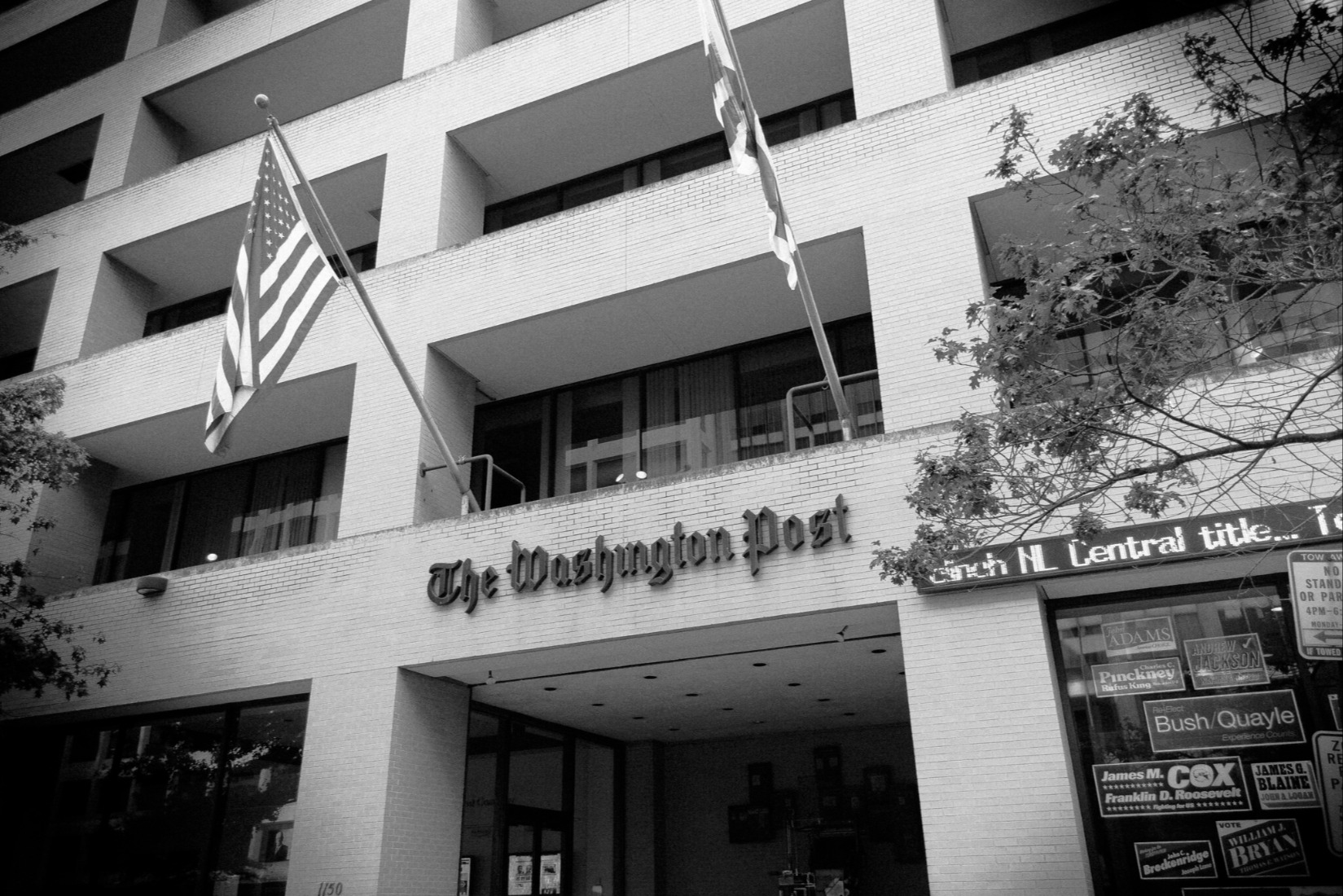Seditious Kvetching: The Surprisingly Non-Trivial Defense in the Oath Keepers Prosecution
Because there was no concrete plan to storm the Capitol, the defendants have been able to argue that their rhetoric was no more than that: rhetoric.

Published by The Lawfare Institute
in Cooperation With

Editor's note: Two days after this piece posted, and after three-and-a-half days of deliberation, the jury reached a verdict in this case. As Parloff foreshadows here, it was a splintered one. Nevertheless, top defendants Elmer Stewart Rhodes III and Kelly Meggs were each convicted of the top charge, seditious conspiracy, while each of the five defendants was convicted of at least two felonies. A chart summarizing the verdict is available here.
In the early morning hours of Nov. 4, 2020, as the returns from the previous day’s election presaged that future President Joe Biden had unseated then-President Donald Trump, a member of the Oath Keepers, the far-right paramilitary group, tapped a question into one of the group’s many chat channels over the end-to-end encrypted messaging app Signal.
“Well what’s the gameplan?”
With trademark verbosity and braggadocio, Oath Keeper founder and leader Elmer Stewart Rhodes III responded:
… Don’t give legitimacy to an illegitimate, fraudulent … system. ... I won’t ever recognize [Biden] as a legitimate President because of that fraud … and … his being a ChiCom [i.e., Chinese Communist] puppet . . .
… The left, including the Democratic Party, has taken off the mask and revealed their totalitarian, Marxist, America-hating, and hate-filled agenda. They seek our destruction. They seek the destruction of all we swore to defend. We must defeat them. Even if one of them occupies the White House. …
… As General Washington told the troops before the battle of Long Island, “… Our cruel and unrelenting enemy leaves us only the choice of brave resistance, or the most abject submission. We have therefore to resolve to conquer or die.”
One day later, Rhodes broached the c-word.
“We aren’t getting through this without a civil war,” he said. “Prepare your mind, body, and soul.”
On Nov. 7, 2020, the day the media projected that Biden had won, Rhodes circulated to two different Signal chats a link to the advice of a Serbian friend who explained how revolutionaries in his country had successfully thrown off a dictator’s yoke.
“We must now do what the people of Serbia did when Milosevic stole their election,” Rhodes wrote. “Refuse to accept it and march en-mass [sic] on the nation’s Capitol.” He then continued, quoting his Serbian friend’s template, including this excerpt:
— Millions gathered in our capital. There were no barricades strong enough to stop them …
— Police and Military aligned with the people after a few hours of fist-fight.
— We stormed the Parliament.
If seditious rhetoric alone were sufficient to prove seditious conspiracy, the prosecution against Rhodes and four compadres now playing out in U.S. District Court in Washington, D.C., would be a slam dunk. For at least two months, all of these defendants engaged in or endorsed over-the-top, written and oral threats or promises to “oppose by force the authority” of the United States or to use “force to prevent, hinder and delay the execution of [the] law[s] of the United States” governing the transfer of presidential power—the two clauses of the seditious conspiracy statute under which they have been indicted. Then, during the Jan. 6 insurrection, three of these defendants—along with about 17 other Oath Keepers indicted in related cases—ascended the east Capitol steps in “stack formation” (each with his or her hand on the shoulder of the cadre ahead) in two successive waves and penetrated the building where Congress, in joint session, was due to certify Biden’s election. The spectacle of these seemingly disciplined troops, kitted out in full battle rattle—camo uniforms, helmets, tactical vests, tactical goggles, tactical gloves, and, in some cases, anti-ballistic plates, bear spray, and paracord—became perhaps the most indelible emblem of the insurrection: a coordinated, militaristic assault on our democracy.
So what’s the defense?
In two words: No plan.
Despite having sifted through thousands of Signal, Facebook, and text messages extracted from dozens of seized phones; having been provided by an informant with a recording of one of their secret GoToMeetings (a videoconferencing app); having debriefed scores of witnesses, including seven Oath Keepers who pleaded guilty—and, amongst those, three who specifically pleaded guilty to seditious conspiracy—the government never produced evidence of any Oath Keeper plan to breach the Capitol on Jan. 6 or, for that matter, any concrete plan of any kind laying out precisely how they would block Biden from taking power.
In fact, two of the government’s own key witnesses—Oath Keepers who had pleaded guilty to conspiracy—each acknowledged that they knew of no plan to storm the Capitol on Jan. 6 and that they’d received no orders from either Rhodes or any of his lieutenants to do so. On cross-examination, one of them, Graydon Young, even described his decision to enter the building that day as “spontaneous.”
Because there was no concrete plan, defendants have been able to argue—not without force, in my view—that Rhodes’s and the others’ earlier rhetoric was no more than that: rhetoric. It was hyperbole; bombast; bravado; locker-room talk; or venting. You know, kvetching. One defense witness claimed it was as harmless as the smack talk you might hear from old codgers sounding off in a barber shop—though these particular codgers had an arsenal of AR-15s across the river from the barber shop in question.
The government did not deny the absence of a plan. It argued, instead: So what?
“What a colossal waste of time,” Assistant U.S. Attorney Jeffrey Nestler remarked in his rebuttal summation of the defense lawyers’ incantation of those words: “no plan, no plan.” Nestler invited jurors to pore over U.S. District Judge Amit Mehta’s jury instructions to satisfy themselves that, indeed, the government did not need to prove any plan. To demonstrate conspiracy, it must prove only an “agreement,” “mutual understanding,” or “meeting of the minds”—“explicit or implicit”—between two or more people to accomplish an unlawful goal.
In its written filing opposing the defendants’ motions for a directed verdict of acquittal, the government argued that it had amply met that burden:
As legal challenges to the election sputtered … Rhodes and his co-defendants explicitly discussed the need to use any means necessary, up to and including force, to oppose the transfer of power, and they began to focus on January 6 as a day of action for their objective. Then, on January 6, the defendants seized the opportunity to advance their goal by participating in the attack on the Capitol. [Emphasis added.]
So while it was other rioters who first breached the Capitol, the Oath Keepers’ belated decision to join in was the culmination of the preexisting conspiracy. The government quoted the testimony of Graydon Young, one of the testifying Oath Keepers who’d pleaded guilty, as an example of how the defendants came to effectuate opportunistically the mutually agreed upon overarching goal of the conspiracy.
We talked about doing something about the fraud in the election before we went there on the 6th. And then when the crowd got over the barricade and they went into the building, an opportunity presented itself to do something. We didn’t tell each other [to go in. …. It was] common sense.
Jason Dolan, the other testifying Oath Keeper who’d pleaded guilty, testified to the same thing.
We were up in D.C. We were there. We were on location. So when the Capitol Building—when the doors opened, we get—went in. … And … it was that same idea of the … [Signal chat] texts over and over: We will do something. We will do something. We will do something. And now here we are in front of the Capitol doors, and they opened. And it was: Let’s do something.
Still, that proof is a little dissatisfying. Spontaneity sounds like the opposite of conspiracy. Without a concrete plan or an express order to go in, how is the jury to know beyond a reasonable doubt that what was in the minds of the two cooperating witnesses was the same thing as what was in the minds of the charged defendants? Hundreds of people who spontaneously went into the Capitol that day have been charged with misdemeanors—not seditious conspiracy, a charge that asymptotically approaches treason.
Now, in fairness, my summary so far has been a little unfair to the prosecution. There was some evidence that Rhodes may have given an order—veiled or even explicit—for his troops to storm the Capitol. At 1:25 p.m. on Jan. 6, about a half hour after the bike-rack barriers around the perimeter of the Capitol Grounds had been overrun, Rhodes sent a message to a key Signal chat channel: “Pence is doing nothing. As I predicted.” Then, at 1:38 p.m., Rhodes added, “All I see Trump doing is complaining. I see no intent by him to do anything. So the patriots are taking it into their own hands. They’ve had enough.”
Three minutes later, Rhodes sent another series of messages to a Signal leadership chat channel:
Hey, the founding generation stormed the governors mansion in MA and tarred and feathered his tax collectors. … They didn’t fire on them, but they street fought. That’s where we are now.
Next comes our “Lexington”. It’s coming.
The latter allusion would not have been obscure to Oath Keepers—members of an organization that Rhodes officially founded in Lexington, Massachusetts, on April 19, 2009, the anniversary of the Shot Heard Round the World in 1775—the start of the American Revolution. Were these messages signals for his troops to attack?
On top of these, there’s circumstantial evidence of a more direct order to storm the Capitol. At 2:31 p.m.—18 minutes after rioters breached the west front of the Capitol building—the Oath Keepers’ operations leader that day, Michael Greene, called Rhodes. Thirty-nine seconds later, defendant Kelly Meggs, who was then leading about 14 Oath Keepers toward the Capitol, also called Rhodes. Nine seconds after that, Rhodes merged the two calls. The three men—defendant Rhodes, defendant Meggs, and Greene (indicted separately)—stayed on the three-way call for 90 seconds. At just before 2:34 p.m., Meggs hung up. Then, within two minutes, Meggs led Stack I up the East Capitol steps and, by about 2:40 p.m., into the Capitol.
What was said during that momentous three-way call? When Rhodes testified, he claimed Meggs had had a bad connection and he couldn’t hear him. Really? Rhodes couldn’t hear Meggs—yet merged his call with Greene’s and then stayed on the line with him for the next 90 seconds? (Meggs did not testify. Greene testified on behalf of Rhodes and said he had no recollection of any three-way call. He also said he never heard any order from Rhodes to storm the Capitol.)
To be sure, there are more charges in this case than just seditious conspiracy. So even if the jury tosses that charge, others might stick. Still, when the government hauls out a big, rarely used gun like this one—the statute famously used to convict Sheikh Omar Abdel Rahman, who conspired to bomb the World Trade Center in 1993—any misfire will be a humiliation. (See, for instance, the catastrophic Last Time the Justice Department Prosecuted a Seditious Conspiracy Case.)
The five defendants here are charged in a 10-count indictment. (The grand jury actually charged them in a 13-count indictment that included four additional defendants, but because of logistical issues—including no courtroom big enough in the District of Columbia’s federal courthouse—these five were split off to stand trial first.)
The quality of the evidence against each defendant varied markedly. For that reason, a split verdict—both in terms of which defendants, if any, will be convicted and which charges each might be convicted of—seems likely.
All five are charged with three different conspiracies: seditious conspiracy (18 U.S.C. §2384), conspiracy to obstruct an official proceeding (18 U.S.C. §1512(k)), and conspiracy to prevent members of Congress from discharging their duties (18 U.S.C. §372). All five are also charged with the substantive count of obstructing (or aiding and abetting the obstruction of) an official proceeding (18 U.S.C. §1512(c)(2)).
Three defendants—Kelly Meggs, Jessica Watkins, and Kenneth Harrelson—are also charged with destroying (or aiding and abetting the destruction of) federal property (18 U.S.C. §1361). This may be the weakest count. On the one hand, the government showed that the Columbus and East Rotunda doors—the outer and inner sets of doors between the East Capitol steps and the Rotunda—together suffered close to $35,000 in damages caused by rioters who forced their way through them that day. But the government failed to prove that any Oath Keeper even touched those doors, which had unquestionably suffered considerable damage before the defendants ever got there.
Defendant Watkins—alone—is charged in count six with impeding federal law enforcement officers during a civil disorder (18 U.S.C. §231(a)(3)). This accusation stems from her participation in a mob that attempted to push through a battalion of riot police in the Capitol hallway leading to the Senate chamber. “Push, push, push,” she can be heard saying in a video introduced by the government. “Get in there. Get in there. They can’t hold us.”
When Watkins took the stand at trial, she admitted this offense and apologized for it—a sensible strategy, given the rock-crushing proof against her. (The government also presented two videos of what her mob’s assault looked like from the riot police’s perspective.) But Watkins denied all other charges.
Four of the defendants—all but Watkins—are accused of obstruction of justice by deleting documents from their phones.
The strength and quality of the proof against each defendant varies greatly. In many respects, the proof against Rhodes is the strongest. His seditious rhetoric was the most voluminous and outrageous, and continued even well after the insurrection. On cross-examination, he even appeared to admit that he planned to take up arms against the United States, only quibbling that he anticipated doing so after the inauguration, not before. Rhodes also personally purchased about $20,000 in firearms-related equipment between Jan. 1 and Jan. 5, 2021, and then another $17,000 between Jan. 6 and Jan. 19—the day before the inauguration.
On the other hand, Rhodes never entered the Capitol. So if the jury does not find that the government proved a conspiracy, it would likely have to acquit him of everything except tampering with evidence.
The case against defendant Harrelson is the weakest. His name was uttered the least frequently of any defendant during the seven-week trial. Though he entered the Capitol and was alleged to be the “ground team leader” of the Florida Oath Keepers, he appears to have seldom, if ever, participated in the Signal chats, and did not use Facebook, Twitter, or Parler—rich sources of incriminating proof against other defendants.
Finally, defendant Thomas Caldwell is sui generis. On the one hand, his Facebook Messenger communications were highly incriminating. He discussed staging “prestrike recces” (that is, reconnaissance missions) and plotted out preposterous plans for ferrying “heavy weapons” across the Potomac from Virginia if needed on Jan. 6. And at 7:38 p.m. on the evening after the insurrection, he gleefully recounted for friends what he and his wife, Sharon, had purportedly done that day:
… Sharon and I rolled with the Oathkeepers and some other militia. … Cops out of nowhere started throwing flash bangs and teargassed a kid’s group. … Then we heard that Pence fucked us. … Then the lying media said Trump supporters were breaking through barriers so I said if we’re going to get blamed, might as well do it so I grabbed up my American flag and said let’s take the damn capitol so people started surging forward and climbing the scaffolding outside so I said lets storm the place and hang the traitors. … [Then] we got on the parapets and the people in front of me broke [through] the doors and and started duking it out with the pigs who broke and ran. Then we started stealing the cops riot shields [and] throwing fire extinguishers through windows. it was a great time.
But it developed that Caldwell—a 65-year-old Navy veteran with a full, service-related disability—was a world-class storyteller. Though Caldwell, with the help of a double dose of his opioid painkillers, did make it all the way to the top of the inaugural scaffolding that day—on the west side of the Capitol, the opposite side from where the Oath Keepers entered—the government concedes that he never entered the building. It’s unclear if he even witnessed any of the violence he so vividly described to his friends. He and his wife testified that they didn’t—that they’d just heard rumors from others in the crowd—and none of the photos or videos they or others took that day prove otherwise.
Also, since Caldwell was never a dues-paying Oath Keeper, he wasn’t invited into any of the incriminating Signal chats. So the evidence of his participation in the conspiracy—assuming there was one—is weaker than the proof against Rhodes, Meggs, or Watkins.
For all of these reasons, the jurors have their work cut out for them. They are looking at five very differently situated defendants, 10 counts, and a multiplicity of vexing fact situations with respect to each.
The key question remains whether the government has proven conspiracy. Does unquestionably seditious kvetching plus “opportunistic” and “spontaneous” trespassing amount to seditious conspiracy?
I don’t envy the jurors their task in deciding.





